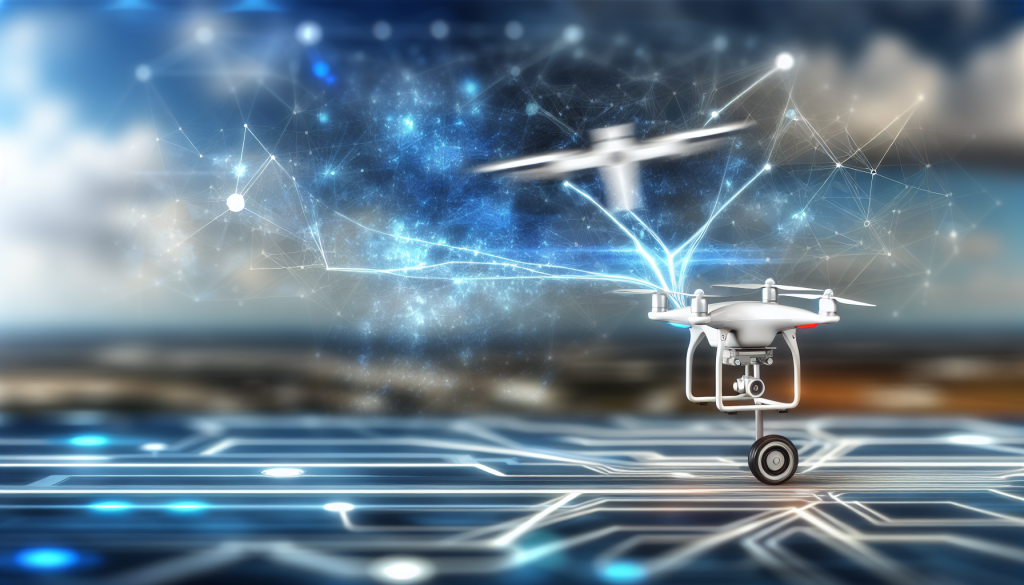The Future of Drone Defense: AI’s Role in Modern Warfare
In the rapidly evolving landscape of modern warfare, drones have emerged as both a formidable asset and a significant threat. The recent partnership between defense startup Anduril and OpenAI underscores the increasing reliance on artificial intelligence (AI) to bolster national security, especially regarding counter-drone operations. This collaboration aims to integrate advanced AI solutions into existing defense systems to enhance their efficacy and operational efficiency.
The Strategic Partnership
Anduril has established a “strategic partnership” with OpenAI to develop and deploy AI solutions tailored for national security missions. Their focus is on countering threats posed by unmanned aerial vehicles (UAVs). By merging OpenAI’s advanced machine learning models with Anduril’s high-performance defense platforms, the two companies seek to create robust counter-unmanned aircraft systems (CUAS) capable of detecting, assessing, and responding to aerial threats in real-time. This partnership emerges from a pressing need to upgrade defense technology in light of escalating drone-related incidents.
Context of Rising Drone Threats
The threat of drones has surged into public attention, particularly following Russia’s invasion of Ukraine, where UAVs have been utilized extensively on the battlefield. This shift has prompted the Pentagon to prioritize advancements in technology aimed at defending troops and facilities against drone incursions, both domestically and abroad. As military installations report hundreds of drone incursions in recent years, the urgency for effective countermeasures against these aerial threats has never been more pronounced.
Innovative Defense Solutions
The Pentagon is experimenting with a variety of defense solutions to counter drone threats. Recent military exercises have showcased a wide array of approaches, including cyberattacks, nets, and other technological measures aimed at neutralizing drone threats. Each method comes with its own advantages and challenges, underscoring the necessity for a layered defense strategy. As Col. Michael Parent of the Army-led Joint Counter-small Unmanned Aircraft System Office emphasized, no single capability can entirely withstand the complexities of drone swarm attacks. A combination of kinetic and non-kinetic systems will be crucial in developing a resilient defense posture.
AI as a Game Changer
Artificial intelligence is poised to revolutionize the way militaries approach drone defense. Its ability to rapidly analyze data allows for quicker identification of threats—an essential capability when confronted with multiple, simultaneous drone incursions. Recently, Northrop Grumman announced that it would be integrating AI into an Army command system to enhance its defensive capabilities against drone threats. This illustrates a broader trend in the defense sector, wherein AI is increasingly viewed as a critical tool for maintaining safety and operational effectiveness.
Ethical Considerations and Oversight
As with any integration of cutting-edge technology into military operations, ethical and policy considerations loom large. The Pentagon is currently grappling with challenges associated with using AI in kinetic operations. Past incidents have demonstrated that popular AI systems can make mistakes, prompting a cautious approach to their implementation in defense scenarios. Anduril and OpenAI have recognized these concerns, emphasizing their commitment to AI safety and ethics as a foundational aspect of their partnership. They have also indicated that their collaborative efforts will be subject to rigorous oversight, ensuring that ethical standards remain a priority.
The Road Ahead
As the partnership between Anduril and OpenAI progresses, the future of drone defense looks increasingly promising. The fusion of advanced AI technologies with established defense systems may give militaries the edge they need to mitigate the growing threat posed by drones. While the technology promises significant benefits, the ongoing discussions around ethical and responsible AI use will shape its development and implementation in national security strategies.
In this evolving landscape, staying informed and adaptable will be crucial for defense teams as they navigate the challenges and opportunities that advanced technologies present in the realm of aerial defense.

